Worldbuilding Ikoria
When I started at Wizards in 2018, one of my first responsibilities was setting up the concept push for Cricket, aka Ikoria: Lair of Behemoths. I'm so excited that we finally get to share this setting with you.
Now that you've taken the Planeswalker's tour of Ikoria, let's go back in time and talk to Doug Beyer, Andrew Vallas, and Jehan Choo about the creation of Ikoria's unique theme, creatures, and environments. Sam Burley was also a huge part of this project's early vision as lead concept artist and concept push art director. He wasn't able to participate in the interview, but he did suggest some topics for conversation.
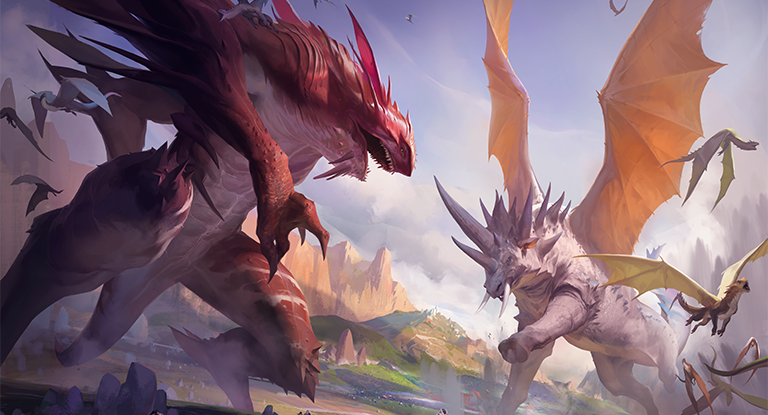
Q: Could you please introduce yourselves and describe your roles on Ikoria: Lair of Behemoths?
Doug: I'm Doug Beyer, principal creative designer on the Magic Worldbuilding team. I was the creative lead for Ikoria. Creative leads are in charge of making sure the creative identity of the set coheres with its gameplay and product intent—basically being the imagination-glue between a lot of smart folks. And it's always a long list of smart folks!
Andrew: My name is Andrew Vallas, and I took over as art lead on Ikoria from Sam Burley. I oversaw the creation of the world guide and commissioned the card art for the set. After commissioning the second and final wave of cards, personal matters unfortunately required my stepping away from my position at Wizards of the Coast. I am very excited to see how everything came together!
Jehan: Jehan Choo, illustrator for Magic: The Gathering and now senior concept artist on the Magic Creative team at Wizards. I believe Sam Burley approached me [about being on the concept push] after seeing some of the crazy creature combinations I illustrated for the Simic guild, including Sharktocrab.
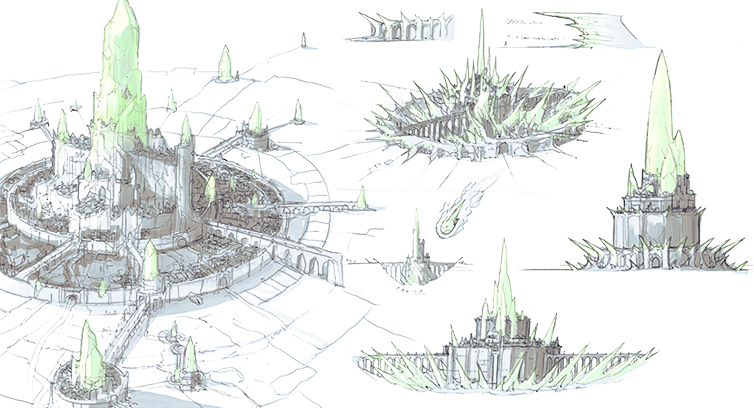
Q: Worldbuilding might be led by one team, but who else is part of that "long list of smart folks" that contribute to a set's creative identity?
Doug: I worked with writers on the worldbuilding details of this world, worked with the art directors and concept illustrators on the look and tone for the world guide, worked with Dave Humpherys's Set Design team on how the world and gameplay would mesh well, worked with producers and product architect Mike Turian on the scheduling and product suite, worked with art directors and a zillion talented freelance illustrators on the card art, worked with yet another set of ADs and illustrators and graphic designers for the Booster Fun style and vision, worked with yet another set of writers and the Editing team on the names and flavor text of the set, worked with the Franchise team on the story, and worked with marketers and copywriters on the way the set would be rolled out and presented.
Magic sets are monsters—they consume a lot of humans!
Q: Where did the idea for the plane of Ikoria start?
Doug: Sam Burley had an idea for a world where evolution runs wild. That had been simmering for a while until someone described it with the phrase "monster island," which got everybody excited. It all came together when Sam drew "the image."

Everybody kept stopping by that image and commenting on it—you could tell that people were drawn to the bond between monster and human. The feeling of that bond gave this world its charm and its emotional heart, and that's how we pitched it to get onto the schedule. The set idea was greenlit by the bosses, and we got to work.
Q: How did you approach the worldbuilding process for this set?
Doug: The team of worldbuilding writers met every week to brainstorm ideas and develop the overall direction. As those who work with me know, I'm very fond of standing at the whiteboard while colleagues shout out ideas.
One fun technique we did for the first time on this set was something I called "crowd-snarking." About midway through the worldbuilding process, I asked the team to think about the world as we had it so far and come up with criticisms we might hear from players about the worldbuilding. It wasn't hard to get into that mindset—we really let loose on ourselves and filled the board with comments we thought we might hear.
And that helped us identify weaknesses of the brainstorming so far and segments of the audience who might feel left out by the tonal direction we were heading. We course-corrected on a few details, and it made the world stronger overall. It was a great tool in the creative arsenal, and we've used it on other sets since.
Q: What ideas were left on the worldbuilding room floor?
Doug: Initially, there were some ideas that the landscape could evolve as well as the monsters—lava flows, plate tectonics, island chain formations—a whole "ever-changing world" theme. It's still a cool idea, but it was too close of an idea to Zendikar's Roil. So that part was shelved in favor of focusing on monsters that could grow and mutate, which proved to be a great fit with gameplay.
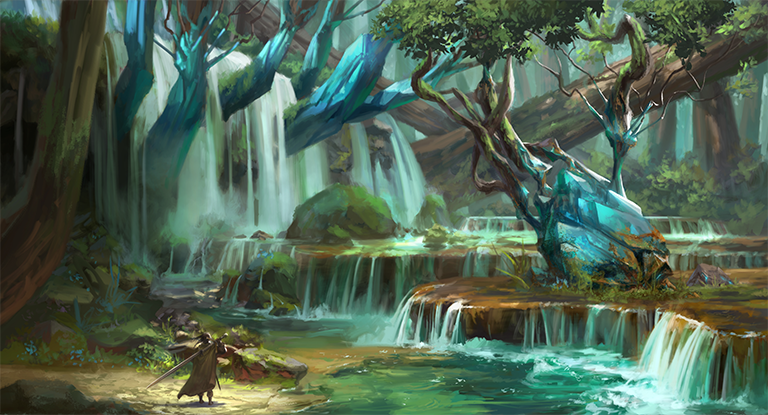
Q: Can you talk more about mutate, a design mechanic that is also tied deeply with the visuals and story of Ikoria?
Doug: The initial direction [of Cricket] was driven from the creative as far as I recall, from the "monster island" idea. But like most Magic sets and worlds, there was interplay between the mechanical gameplay and the creative conceit.
A big example of this interplay was the development of the mutate mechanic. The initial functionality for mutate was pretty restrictive—your mutate creature could only mutate onto a creature that shared a creature type with it. Cats could only mutate onto Cats, a Dinosaur Beast could mutate onto a Nightmare Dinosaur or a Beast Elemental, and so on. That mechanical direction was based on the creative intent we were working with at the time; we had a lot of cool ideas about how your monsters would look as they were in constant flux, as they gained new dino spikes or lion manes or big, tramply beast hooves.
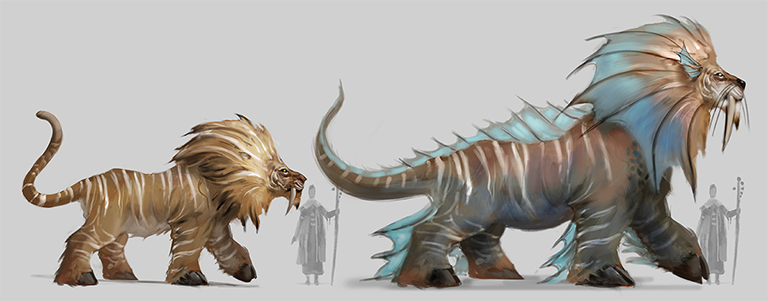
That creative direction was also the origin of the five main monster tribes (Cat, Elemental, Nightmare, Dinosaur, and Beast)—chosen to create a wide range of monster shapes while keeping the number of mechanically relevant tribes reasonably low.
Doug: As we played the set, though, we found that the strict tribal mapping was making the gameplay too narrow. Mutate was one of the most fun parts of the set, and the Cat-must-mutate-from-Cat rule was preventing you from doing the fun thing enough. I talked it through with Dave, and we decided to try opening up the gameplay more so that a monster could mutate onto any non-Human. That tweak still kept monsters mutating from monsters—worldbuilding-wise, we didn't want open season of your Human Soldier suddenly becoming a Cat Beast Nightmare—but it let the fun of mutate happen way more often. As a bonus, it let us create monsters that went further afield into weirder creature types, while still working with the mutate mechanic. And that's the story of how the mutate mechanic mutated.
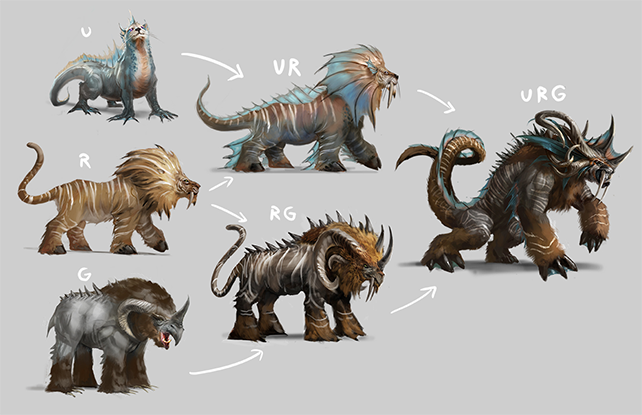
After the first few phases of worldbuilding are complete, we move onto the concept push. We bring together guest artists and our in-house concept artists to spend three weeks brainstorming and iterating on the unique visuals of the world. This is when we create all the reference images that fill our world guides, which are in turn used by our illustrators to create the card art you are now seeing during previews. For Cricket, Sam Burley recruited a team to tackle the wild creatures and environments of Ikoria, including Daarken, Jesper Ejsing, Jason A. Engle, Kirsten Zirngibl, and Jehan Choo, plus our in-house concept artists Rebecca On and Nick Southam.
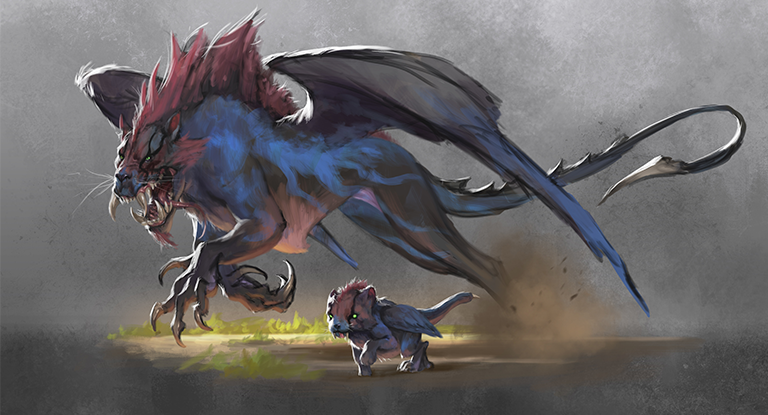
Cat monsters are ferocious carnivores that roam in prides.
Q: Jehan, what was it like to join your first Magic concept push?
Jehan: Uhh, amazing. I've been a fan of Magic since Fallen Empires ('94), so it's been a dream of mine to one day illustrate for the game. To be invited to a push, to work with all these other Magic artists whose art I grew up admiring—it was beyond anything I'd dreamed of.
Q: Where did you look for visual inspiration during the concept push?
Jehan: I drew from some of my already major inspirations: monster movies, stories with animal companions, and whimsical anime. I also had the privilege of just peeking to my left at all the awesome sketches Jesper Ejsing was pumping out.
Q: What was the hardest thing to solve?
Jehan: Oddly enough, the more generic creature types like Beast or Elemental were really hard to solve. It's tricky coming up with something specific for creature types so broad.
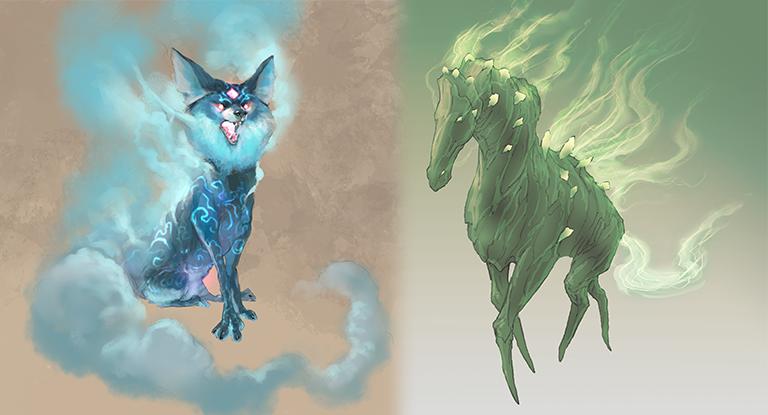
Elementals are wondrous, ageless, mystical beings.
Q: We also featured Dinosaurs in Ixalan. How did you approach Ikoria's Dinosaurs to distinguish them?
Jehan: No feathers! These are more your traditional dinosaurs but dialed to 11 with the armor and spikey bits.
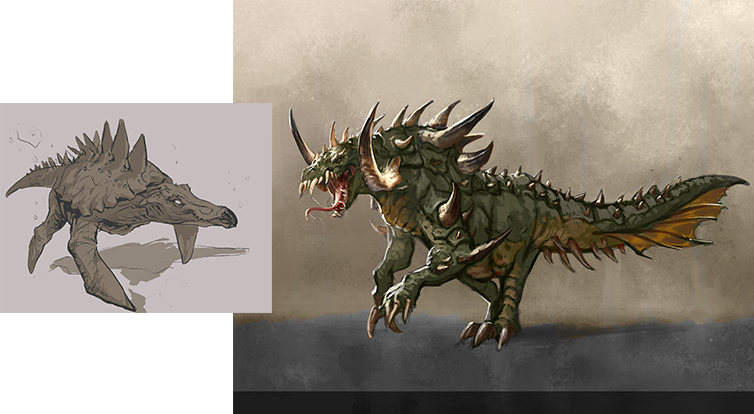
Dinosaur monsters embody all the violence and fury of churning molten rock.
Q: Let's talk about the development of Nightmares. What makes something a Nightmare in Ikoria? How do they differ visually from our Nightmares in other sets?
Andrew: The development of Nightmares was particularly interesting for me, really showcasing the excitement of a successful concept push. Nightmares were the creatures we were most unsure of going into the push, and yet from the very first sketch, the pieces just came together. We were able to explore and refine the concept with much less struggle than some of the other, seemingly more straightforward creature types.
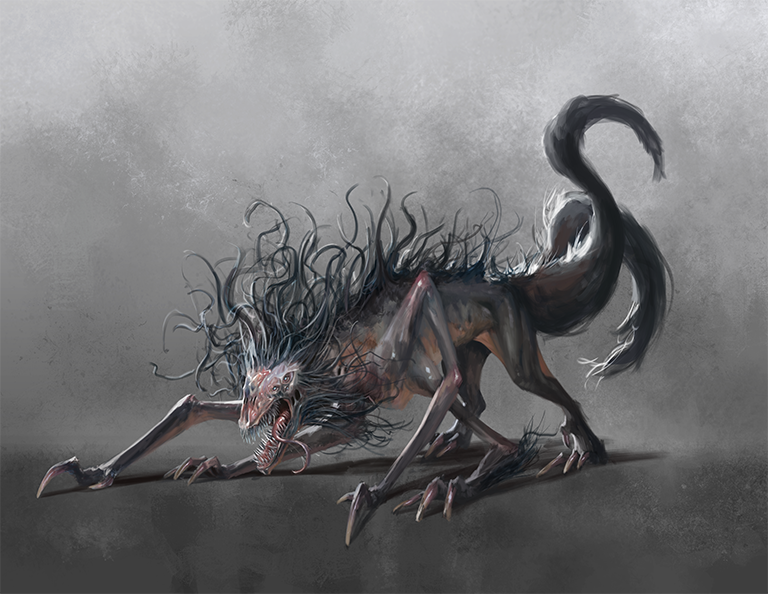
Doug: We were looking for a type of monster that could appeal to folks who might like their monster friends to be a little scary, off-putting, or just odd. Ikoria had tons of "AAHHH, RUN AWAY" (your traditional giant ferocious monsters) and plenty of "awww" (the small adorable critters category that we called "shoulder sitters" during worldbuilding), but it was missing some "what is that thing?" We needed some monsters that broke out of the usual adrenaline-pumping carnivore scariness and tapped into more primal fears of mystery and shadow and alienness. That's where the Nightmares come in.
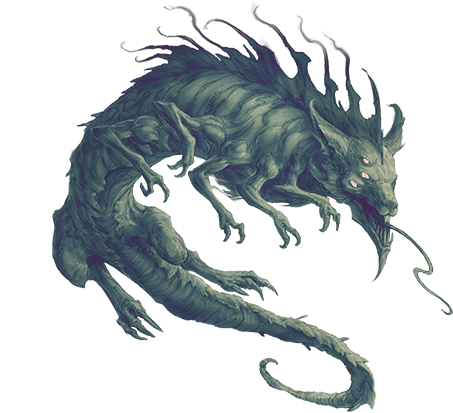
Jehan: Nightmares are more united as a genus now, whereas before they were just scary-looking creatures tossed into a category. Nightmares on Ikoria have more specific visual markers, including six (at least!) eyes, six limbs, multiple tails, and smoke tendrils. These more exact specifications were introduced to make it easier to tell when another creature type was mutated with a Nightmare.
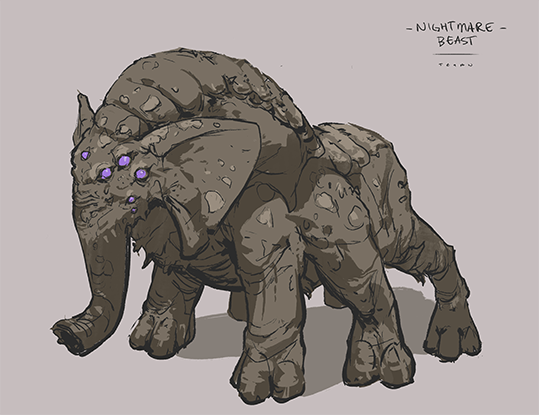
Nightmares are shadowy, unnerving, lurking predators.
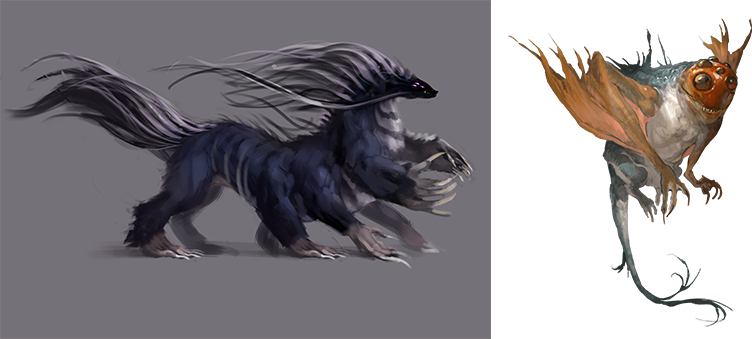
Q: What did you learn from building a world that focused most on its non-humanoid creatures?
Doug: That even when monsters are the stars of the show, you still need a human way to connect with them. Ikoria is an extremely human world—humanity provides the scale and perspective that make the monsters monstrous. The whole "monster island" idea did not come together until we had people present to feel fear, love, hatred, admiration, and every other possible emotion toward monsters.

Q: What is your favorite creature type on Ikoria? What creature do you think you bond with?
Andrew: Looking at the two cats staring at me from atop my bookshelf, I feel almost required to select from among the many feline-inspired creatures, but if I am honest, I think I favor the lovable oddballs of the set that defy easy classification. The [REDACTED, until card preview] is probably the clear winner for me, though, there is no shortage of runners-up.
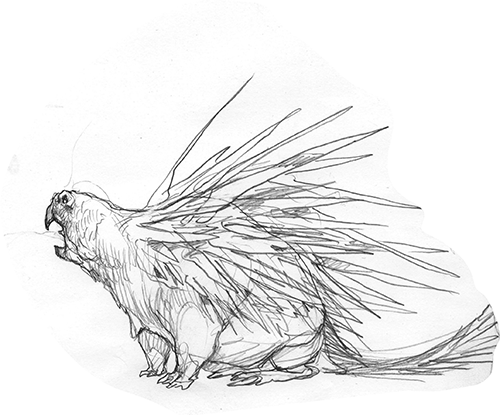
Doug: I really connected with the beasts in the world. I love gentle giants with soft ears that could still smush me into pulp. But I mean, this whole world is wish fulfillment for me—I love the idea of discovering the creature most capable of turning you into breakfast or a footprint-shaped puddle (but now it's your friend—aww).

Beasts are strong, unstoppable, gentle giants that resemble large herbivores.
Jehan: Nightmares! They can be surprisingly cute!
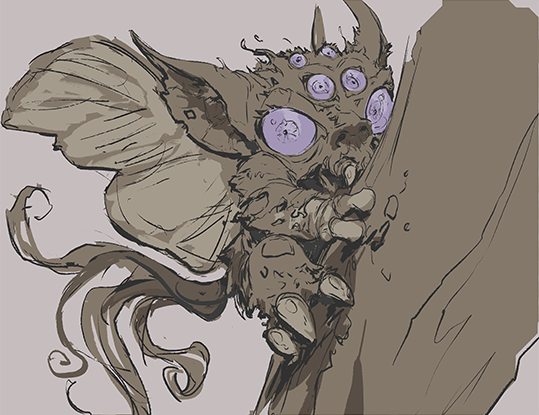
Q: What are you most proud of in this set?
Jehan: My Nightmare Squirrel.
Doug: Ikoria's unification of danger and heart. Magic worldbuilding really sings when you crank up both.
Andrew: I think I am most proud of our success in straddling the line between dictating our visual goals for the set while simultaneously allowing each artist to use their personal creativity and skills to imagine their respective creatures. I think that freedom resulted in some very compelling creatures.
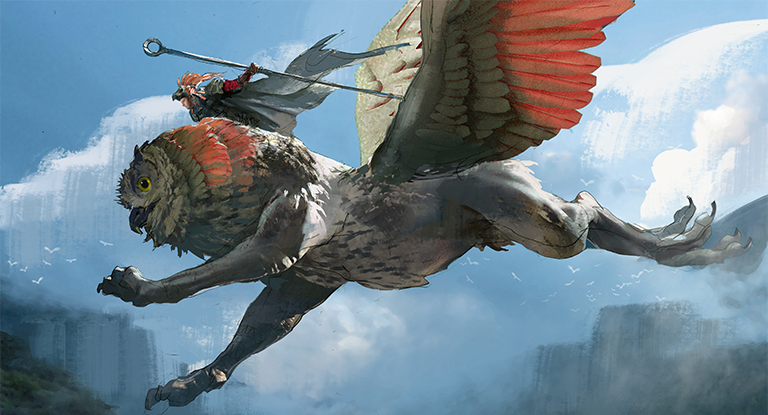
To learn more about the world of Ikoria and the creatures who live there, check out Ikoria: Lair of Behemoths—Sundered Bond, out tomorrow and available for preorder now!
